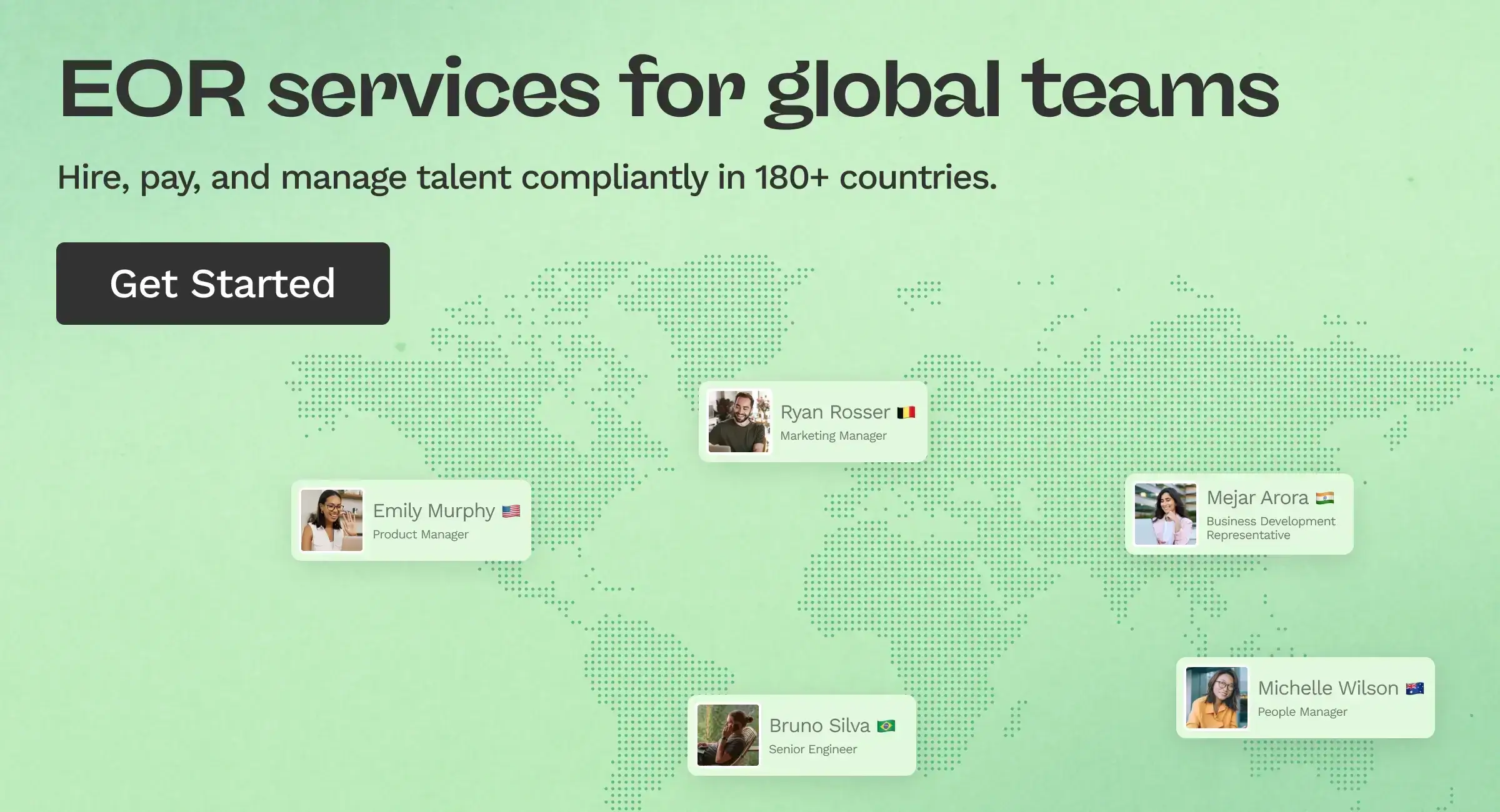Human resources (HR) professionals are meant to focus on the human experience at a company—improving the culture and boosting employee success. Automatable tasks shouldn’t consume their time, especially when software can handle routine tasks.
Still, budget-conscious teams might hesitate to invest, worried about the potential costs. Read on to explore HR software pricing, product types, and why investing in time-saving tech is also an investment in your entire workforce.
Types of HR software and price ranges
HR management software varies by function and price. Some programs focus on payroll. Others streamline recruiting. Many offer full suites for tasks like contract generation, data entry, and payments.
Programs with more features and multi-user access tend to be on the higher end of the cost spectrum. The following are common software categories and price ranges to help you determine the right product for your People team’s needs.
HRIS system
A human resources information system (HRIS) is a multi-functional software that stores employee data (often in the cloud), runs payroll, and manages performance. It drastically reduces the time HR teams spend on menial tasks and prevents data-entry errors.
The cost of HRIS software generally starts at $8 to $25 per employee per month (PEPM). For providers that charge a flat monthly rate, small teams can expect to pay around $200 to $250 per month for popular HRIS systems.
Payroll software
Payroll HR software automates time tracking, wage calculations, and benefits. Many all-in-one tools include helpful features, such as generating pay stubs and calculating payroll withholding taxes.
Costs for top payroll-forward tools can start anywhere from $20 to $85 per month, plus an additional PEPM of a few dollars.
Recruiting software pricing
Recruiting software comes with applicant tracking capabilities to help HR teams find candidates, schedule interviews, and provide onboarding support. Many tools also collect data that highlights inefficiencies, so teams can learn to hire the right candidates faster.
Recruiting software often has tiered pricing, with different features offered at various levels. Costs can start between $50 and $200 per month depending on the feature tier or user count. Advanced versions may charge a monthly flat rate of $200 to $600 per month for small and medium-sized businesses.
Onboarding software pricing
Onboarding software manages new hire paperwork. This includes signature collection, data storage, and training materials. It can even track the new joiner’s progress on these tasks. These tools ensure a secure onboarding process that helps new employees integrate quickly and confidently.
Entry-level onboarding software starts at a few dollars PEPM. Flat-rate options range from $30 to $60 per month.
Employer of record software
Employer of record (EOR) software supports international hiring and payroll compliance. This global HR software guides companies on various benefits administration and tax requirements. All-in-one HR software in this category, like Oyster, streamlines many employee interactions, from recruitment and onboarding to timely international payments.
EOR platforms generally start at $200 to $1,500 PEPM depending on factors like country of hire and role complexity. But the expense can be worth it to avoid costly compliance mistakes.
Factors that impact HR software costs
Pricing for HR software varies widely, and that flexibility benefits buyers. There are plenty of models to accommodate different team sizes and needs. Here are a few factors that determine the price of an HRIS system:
- Number of users: Many HR software providers charge either a per-user or a flat rate for certain team sizes. So the number of HR team members accessing the program is an important cost variable to consider.
- Features: Some products only cover core HR tasks, like automating payroll. Others support teams through all of your HR processes. The general rule is: the more features, the higher the cost.
- Number of employees: Certain programs, like EOR systems, charge per employee. So, companies with large teams receiving payroll through an HR software tool pay more than smaller organizations.
- Integrations: Connecting HR software to existing tools and databases streamlines workflows. For example, a time-tracking tool can link up with payroll software to make correct wage calculations. This helps ensure accurate information across applications but typically increases overall software costs.
- Customization: HRIS systems with branded interfaces or customizable workflows tend to cost more.
- Support: Compared to basic customer service tiers, vendors often charge more for plans with dedicated 24/7 support.
Common HR software pricing and licensing models
HR software pricing can often be tailored to suit different types of organizations. The following are typical pricing structures for these tools:
- Subscription-based: HR software providers with this pricing model charge organizations at recurring intervals, such as monthly or annually. Companies can often add on features or users, shifting the subscription price.
- Flat fee: Flat-fee HRIS services also have periodic billing, but, unlike subscriptions, pricing includes a fixed set of features and a user cap.
- Pay as you go: This model runs on flexible subscriptions that organizations can modify as needs change.
- Custom pricing: Organizations looking for a bespoke tool that integrates with existing software and databases can purchase a tailored program built around specific needs and integrations.
- Tiered pricing: Many top tools offer tiered pricing, ranging from standard packages with basic HR features and low user caps to tools with advanced functionalities for large organizations.
Why should you invest in HR software?
You may experience “sticker shock” when running the numbers on long-term HR application software costs. But the following benefits make the price tag worth it:
- Time and cost-saving: HR software automates tasks and saves your People team time, which translates to money. The same wages you’d have poured into busy work can go into meaningful projects, like creating strategies for improved employee engagement.
- Fewer mistakes: Using HR software for data entry and payroll eliminates the risk of human error.
- Guaranteed compliance: Contracting and payroll mistakes can be costly and may lead to legal action. Even if your People team members are experts at staying compliant with domestic regulations, they may not feel confident applying benefits or writing contracts for global workers. But HR software like Oyster provides expert guidance and globally-compliant hiring and payment tools, helping you stay compliant across borders.
- Better employee experience: HR software streamlines interactions for HR teams and employees across your organization. For example, HRIS platforms that offer employee self-service portals allow workers to check payment status and request time off.
How to calculate HR software return on investment
Determine how much HR software could save your organization by calculating the return on investment (ROI).
To measure ROI, start by totaling current HR costs, including wages spent on recruitment, payroll, and compliance tasks.
Then, estimate savings from automating your HR tasks. Subtract the software costs from those savings. For example, if you spend $5,000 per month on HR software but save $8,000, your investment yields a $3,000 return.
Choosing the right HR software for your company
The best HR software matches your organization’s needs and delivers measurable value. Here’s how to determine the right tool:
- Know what to automate: Review HR department productivity data and survey team members. Are they spending hours per day on data entry? Do they struggle to find the right candidates when recruiting? Define your organization’s pain points to help find the automation plan that fits your HR team’s needs.
- Research products: Compare the key features of top options and find those that meet your needs.
- Run a cost assessment: Once you’ve narrowed down a potential list of tools, review their pricing models and tiers. Then, calculate the ROI of using each tool to see which provides the highest returns. Remember that even intangible returns, like employee satisfaction, can have long-term payouts. If your workforce is happy, they’re more likely to stay, and you spend less on turnover.
- Ask for a demo: Book HR software demos so you can experience their functionality and ask questions before committing.
Oyster’s all-in-one HR software has you covered
The more you can do with your HR software, the better, right? That’s Oyster’s outlook.
Oyster’s global EOR platform automates tasks across the employee life cycle, from contracts and onboarding to payroll and benefits, ensuring compliance at every step. Explore Oyster’s transparent pricing options and find a plan that fits your needs and budget.

About Oyster
Oyster is a global employment platform designed to enable visionary HR leaders to find, engage, pay, manage, develop, and take care of a thriving distributed workforce. Oyster lets growing companies give valued international team members the experience they deserve, without the usual headaches and expense.
Oyster enables hiring anywhere in the world—with reliable, compliant payroll, and great local benefits and perks.
.webp)







